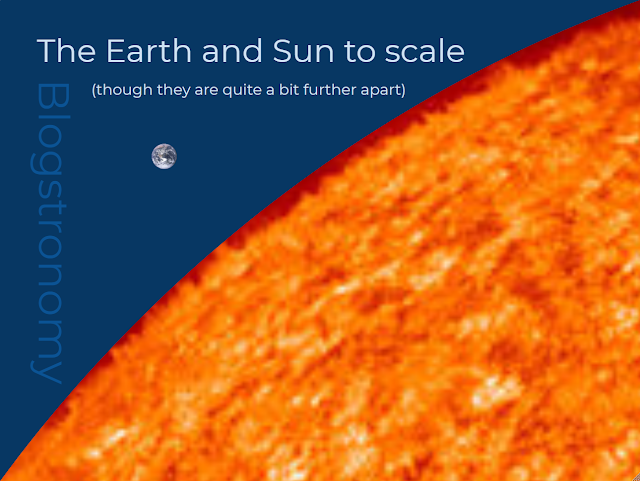Could We Listen to the Radio at the Speed of Sound?
"... so about this car travelling at the speed of sound... What if you weren't listening to a CD; what if you were actually listening to a radio station? If you were travelling at the speed of sound, even if the radio was inside, could the radio waves keep up with the car from wherever they were transmitted? And if they couldn't how long after stopping the car would it take for them to catch up so you could listen to the radio again? - Question posed by Henry (10) via Carlos on G+.
The short answer to this is that radio waves travel at the speed of light, which is a lot faster than the speed of sound, so if you could get your car to travel at the speed of sound the radio waves wouldn't have a problem catching up with you at all.
Short answers are boring, though...
How do radio waves travel at the speed of light when I can hear the sound they make?
Radios most definitely produce sound, don't they? You can hear it. That's what they're for. And the guys at the other end, Chris Evans, or that one off Radio 1, are producing sound, aren't they? So why aren't radios called sounds?
The bit in the middle is key, here. To hear Chris Evans in your car in Leicestershire, he'd have to be shouting pretty loudly from his studio in London**. Even if we ran him through an amplifier it'd have to be a very powerful one even to get the sound to travel a relatively short distance. The thing is that sound waves are absorbed and distorted very easily by the stuff we have around us (including us), so it's not that good for communicating over long distances.
At Chris Evans's end there's a radio transmitter. It takes the electrical signals that are fed into it by a microphone* and turns them into radio signals. Radio waves are part of the electromagnetic spectrum - the same spectrum that 'visible light' is part of. In a way, radio waves are a kind of light (or light is a kind of radio wave). When Chris's transmitter sends out the radio waves they hurtle at the speed of light (because all electromagnetic waves travel at the speed of light) in all directions. Radio waves aren't absorbed or distorted quite so much by things*** and can travel much further before the information they contain becomes useless to us.
At your end, in your car, you have a radio receiver. Your radio notices the radio waves flying through the air, turns the information in them back into electrical signals, and then the speakers turn these signals back into sound waves that can travel the relatively short distance to your ears.
So the only way you could outrun the radio waves is to accelerate your car beyond the speed of light... which is impossible.
If you went fast enough, though, the radio waves would, to you, appear to be stretched out so far that your radio receiver wouldn't be able to detect them. This is due to the same effect**** that causes the pitch of a police car's siren to change when it goes past you at speed.
* Which is picking up Chris's dulcet tones and turning them into the electrical signals
** I'm assuming it's in London. I could be wrong.
*** They are distorted and absorbed a bit, though, so they do get weaker, but there are masts in between Chris and us that pick up the signal and give it a boost.
**** The doppler effect, which is also the effect which lets us measure the expansion of the universe. No, that's not the wrong link! "Redshift" is the name for what the doppler effect does when you're moving away from something. The opposite end of the spectrum (no pun intended, but it kind of works) is "blueshift".



Forgive me for diving into some technical detail but Doppler shift can be a real problem for radio communications. It didn't used to matter so much when radio meant old-style analogue modulation (such as FM - frequency modulation). A few hundred of Hz shift has no appreciable effect on the audio signal. Nowadays, digital modulations such as that used for DAB radio are badly upset if the receiver is travelling fast. DAB is OK (just) at typical car speeds, but the speed of sound would stop it working. The problem is that the audio is encoded digitally, and the modulation technique is designed to cram those bits into a small amount of radio spectrum. The 'gap' between bits in the frequency-domain is so small that the doppler can 'mix' them up.
ReplyDeleteI will _not_ forgive you!
ReplyDeleteThanks for posting, it's really interesting to hear stuff like this! I was wondering about what kind of speed would need to be achieved before noticeable issues would occur.
This engaging article brilliantly tackles the intriguing question of whether you could listen to the radio while traveling at the speed of sound. The author skillfully combines science and humor to explain the complex interplay between radio waves, sound, and the speed of light. The analogy involving Chris Evans and the radio transmitter provides a relatable context, making the scientific concepts accessible to a wide audience. The exploration of how radio waves, being part of the electromagnetic spectrum, travel at the speed of light adds depth to the explanation. The discussion on the limitations of sound waves, their absorption, and distortion over distances underscores why radio waves are the preferred means of communication for longer distances. To discuss more about visit Sound Engineering Colleges in Chennai
ReplyDelete